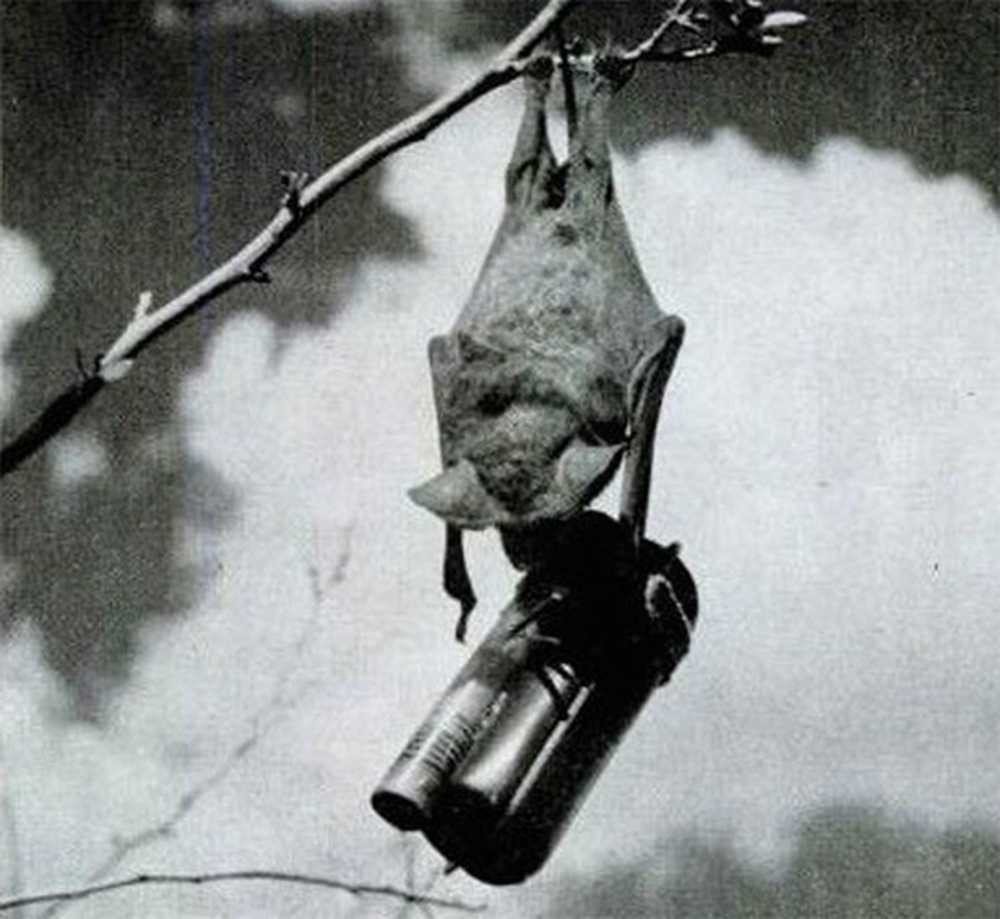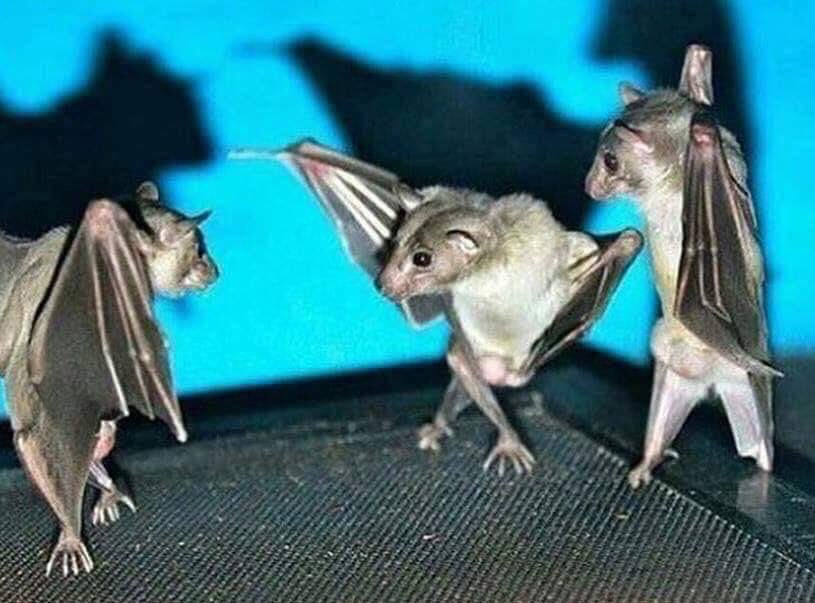I& #39;m fully aware that British teeth are a source of constant hilarity to our transatlantic cousins.
This is probably because our dentists offer advice like "brush more often", and not - to choose an example at random - "have you tried napalm bats?"
This is probably because our dentists offer advice like "brush more often", and not - to choose an example at random - "have you tried napalm bats?"
Yes, it& #39;s time to talk about this thing.
I suspect I& #39;m not giving much away when I note that subsequent events may not develop strictly to the benefit of the bats.
I suspect I& #39;m not giving much away when I note that subsequent events may not develop strictly to the benefit of the bats.
Shortly after the events of Pearl Harbour, Pennsylvanian dentist Lytle S Adams, seen here dreaming of nuclear-tipped elephants or something, wrote to the White House with a modest suggestion. Why not attack Japan with a plague of incendiary bats?
Perhaps unbelievably the reply to this wasn& #39;t "because it& #39;s clearly nuts". Instead President Roosevelt immediately ordered a full research effort into weaponising Chiropterans.
It sounds less crazy than "armed bats".
It sounds less crazy than "armed bats".
Now Adams claimed to have been inspired by nothing more than his patriotic duty, but I reckon he just really hated bats.
Phrases like "lowest form of animal life" and "the reasons for its creation have remained unexplained" definitely imply at least a little ambivalence.
Phrases like "lowest form of animal life" and "the reasons for its creation have remained unexplained" definitely imply at least a little ambivalence.
Perhaps it& #39;s the way they fly through the air via the medium of jazz hands, or perhaps it& #39;s just their ability to have epic inverted dance offs...
Regardless, project Bat Bomb was given to the US Air Force. Failing to spot a joke that had already gone far enough, and indifferent to the ecological impact of incinerating millions of bats on a foreign shore, the batty boot camp began.
The species decided upon was the Mexican free-tailed bat, a species whose latent desire to perform suicide missions for its country had hitherto remained unrecorded by science.
Possibly nobody had thought to ask.
Possibly nobody had thought to ask.
The idea was to strap napalm to the bats, and then release them over Japan. Figuring the bats would then try to roost in dark places - notably in roof spaces - the napalm would start fires across whole swathes of cities far more efficiently than dropping incendiary bombs would.
To get the bats there, they& #39;d be herded into a specialised cannister and dropped by parachute. The cannister would open on the way down to release the bats into what would briefly become their new home.
My notes say the bats would be "chilled". I& #39;m not sure having my own bodyweight in napalm hanging an inch below my crotch would leave me in quite that condition, but I guess bats are not like you or I.
At some point during development, the inevitable happened. The records state that there was "an accidental release of armed bats".
Why they were being stored with napalm attached and ready to go remains a mystery. I& #39;d certainly like to have seen the safety officer& #39;s face.
Why they were being stored with napalm attached and ready to go remains a mystery. I& #39;d certainly like to have seen the safety officer& #39;s face.
The errant bats followed their training and roosted in various parts of Carlsbad Army Airfield Auxiliary Air Base, including the space underneath a fuel tank.
Inflammatory ensued.
Inflammatory ensued.
I& #39;d like to suggest that this was the reason the project was cancelled. Regrettably it was this thing instead.
Unable to convince the bats to undergo nuclear fission, Adams& #39; plan was scrapped.
Unable to convince the bats to undergo nuclear fission, Adams& #39; plan was scrapped.
The bat bomb became just another failed animal weapon of war to be filed away with the Pigeon Bomb, the anti-tank dog, and the chicken-heated nuclear landmine.
Turns out that some days you really can get rid of a Bat Bomb after all.
Turns out that some days you really can get rid of a Bat Bomb after all.

 Read on Twitter
Read on Twitter








